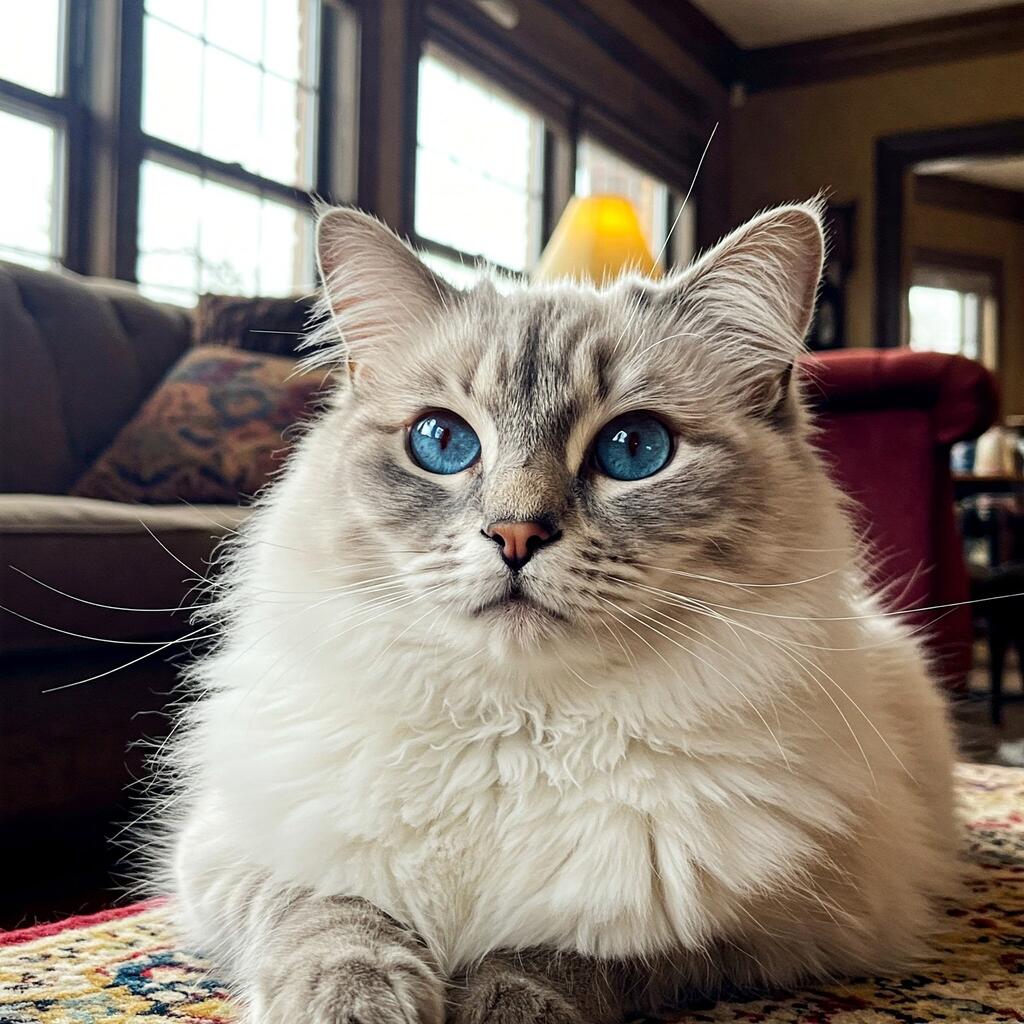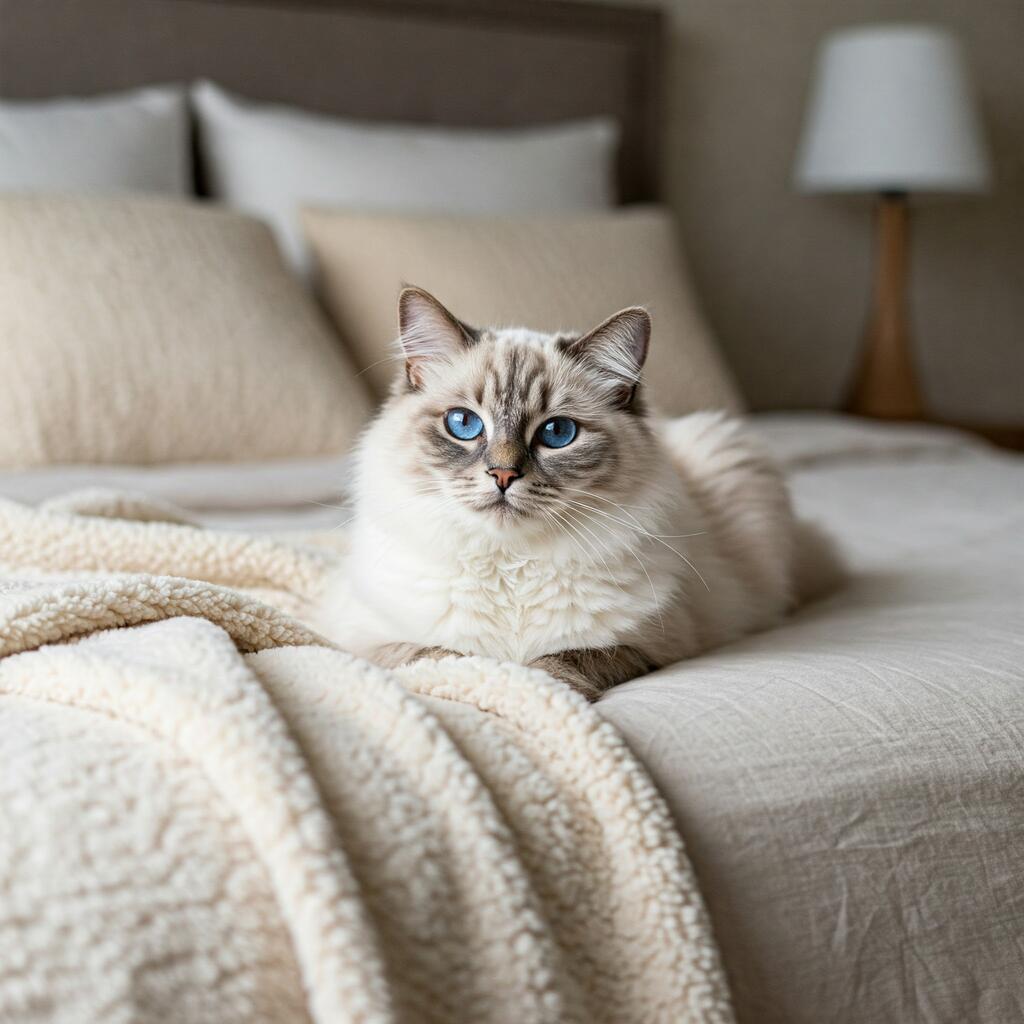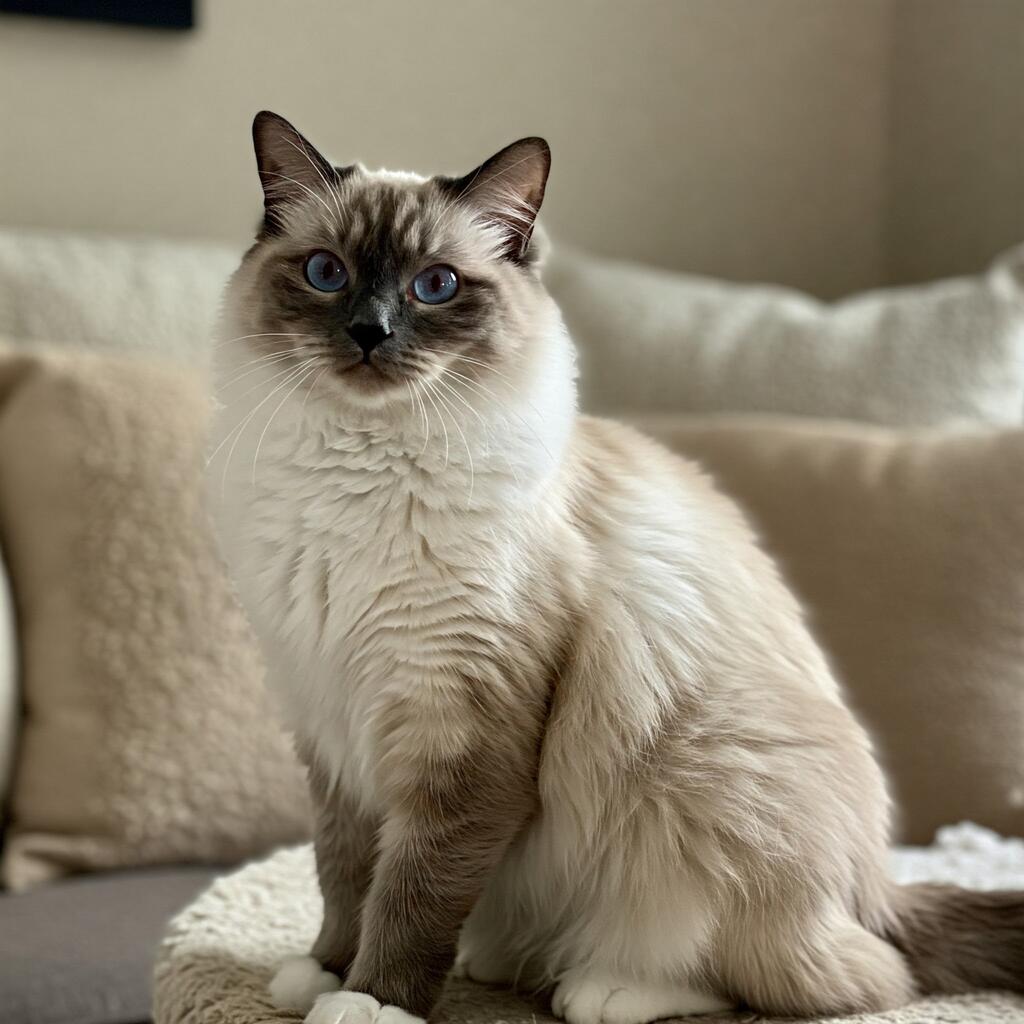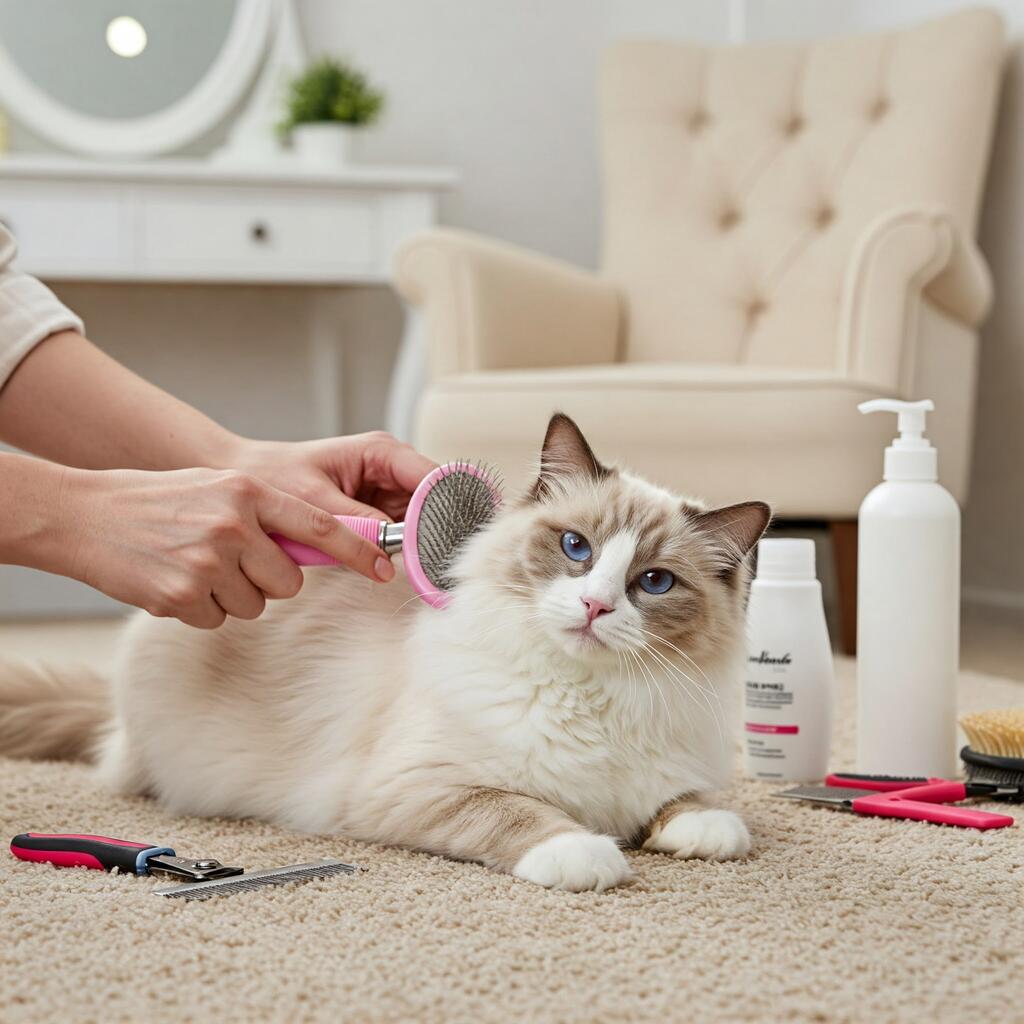
Ragdoll Cat Breed: Understanding Their Blue Eyes
The Ragdoll cat is a fairly recent breed from California by a breeder, Ann Baker. The ancestors of the present Ragdoll were a white Angora cat called Josephine and a Burmese kitten. Later Josephine, with other males, also Burmese or Burmese, produced kittens with a docile, placid temperament, an affectionate nature and a tendency to relax when picked up.
Hence the name Ragdoll, i.e. rag doll, precisely because of its characteristic of abandoning itself completely in its owner's arms. Having a reputation as an excellent flat companion, this breed is very popular in America and since the 1990s also in Europe and Italy, where it is becoming increasingly popular.
This breed was initially so protected that you could not buy a single cat but were always sold in pairs. There is also a legend surrounding the Josephine cat. It is said that she was initially aggressive and distrustful, but during a pregnancy she suffered an accident that completely changed her character and she became very docile and affectionate, qualities that she passed on to the kittens that have since become the most docile cat breed in the world. In its homeland, the United States, it is also called the ‘cherub’ because of its docility.
Character of the Ragdoll cat

It is not suitable for people who are not at home for many hours a day, as it suffers greatly from loneliness. For the rest, it is suitable for everyone; even small children as it is tirelessly playful, as long as the game does not become too violent or noisy, because it is very difficult for the ragdoll to bite or pull out its nails. It is also suitable for the elderly as it is very good company. It is a typical indoor cat and really homely. Even if it has the possibility, it does not stay outside much, preferring the house, where it can follow the various family members in all their movements and daily activities.
He gets along well with other animals, both cats and also dogs as long as they are not too lively. It sometimes develops a degree of jealousy for other animals in the house, but generally accepts them quietly. It is very touchy, and if scolded is capable of sulking for hours, hiding in a corner offended and disheartened.
It tends to develop a friendly relationship with strangers in the home, it can safely be said that this cat gets on well with everyone and is always looking for cuddles and caresses from all the humans in the house. It does not tend to meow and only does so when necessary.
Appearance of the Ragdoll Cat

The Ragdoll is one of the largest breeds of domestic cat. It is a muscular cat with a strong bone structure that gives it an imposing appearance. The male can weigh up to 8 / 9 kilograms, the female up to 5.
The head is large and round with a pronounced chin, the ears are rather wide and well spaced. The eyes are large and oval, somewhat oblique, of an intense blue colour. The neck is rather short with a gorgon of thick hair encircling the neck to form a sort of jacket, which remains thick and fluffy even in summer. The paws are of medium length with a medium strong bone structure, the hind ones being slightly higher than the fore ones. The long tail is well furnished with thick fur.
The Ragdoll cat's coat is particularly soft and compact, it can be long to medium long depending on the variety. The coat colours can be different: seal, blue, red, liliac, tabby, chocolate, etc. There are 3 designs in the breed standard: colourpoint which has a darker colour on the paws, nose, tail and ears; bicolour which is characterised by white spots on the back and an all-white abdomen; mitted which is a colourpoint with a white abdomen and paws.
Care and Health of the Ragdoll Cat

The hair must be brushed at least two or three times a week, during the moulting period also every day even if it loses an average amount of hair during the moult. As far as care is concerned, these are those to be applied to every feline, i.e. cleaning ears, teeth and cutting nails.
You have to be careful with this cat because he has a very high pain threshold, sometimes he doesn't even notice if you catch his tail somewhere, so sometimes he doesn't feel the danger. Another thing to be careful of is that he should never be dropped from above. Unlike many other cats, he cannot turn in the air to fall on his feet.






















